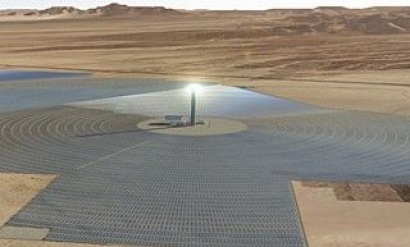
While this announcement was applauded around the globe, individual renewable energy projects in the United States, which will help the country meet these new benchmarks in the transition away from traditional energy sources, are still encountering strong public opposition from local communities as companies propose them.
The Palen Solar Power Project and Soda Mountain Solar, each proposed near California’s Joshua Tree National Park and Mojave National Preserve respectively, have been facing furious opposition from various groups and individuals despite the potential these projects have to greatly increase the solar capacity in the area.
Given these projects’ proximity to a vast expanse of natural habitats, environmentalists and opponents have in part, caused the withdrawal of the Palen application and the slow progression of the Soda Mountain project.
In September 2014, BrightSource Energy and Abengoa Solar withdrew their application for the Palen Solar Power Project, a surprising course of action after the project’s preliminary approval by state regulators just two weeks prior.
According to BrightSource senior vice president Joe Desmond, the project was unlikely to be completed by December 2016, meaning it wouldn't qualify for a 30 percent investment tax credit that expires at the end of that year.
Besides the change in tax policy, the California Energy Commission only approved just one solar tower rather than the two that the company’s original proposed. According to the Energy Commissioner, one tower “feasibly lessens” the significant impacts while “attaining most of the project’s objectives.”
After they have received state preliminary approvals, oddly, last December, the commission rejected the project, stating “significant environmental impacts that cannot be mitigated.”
If the project were able to proceed, it would have been the second large-scale solar tower facility in the United States. Each of Palen’s solar towers would have topped out at 750 feet and generated 250 megawatts of electricity. The voices of opposition echoed loud and firm, saying the project would be standing in the way of active bird migration corridors and potentially kill a large number of birds. Plus, it could damage the historical sceneries in the Joshua Tree National Park.
Not too far away from the site of the Palen Solar Power Project, the Soda Mountain Solar Project is also being challenged by the local public opposition. The site located in a public land present adjacent to Mojave National Preserve, which is also in between Joshua Tree National Park and Death Valley National Parks. Opponents argue that the Soda Mountain Solar Projecting standing in between the two national preserves will kill enormous numbers of migratory birds.
Many local residents and environmental groups opposed this project because it is in the wrong place or it is in their “back yard.” These opponents emphasized that it is within a mile of the Mojave National Preserve, thus the project would block important desert bighorn sheep connectivity between mountain ranges.
Seth Shteir of the National Parks Conservation Association opposed Soda Mountain Solar Project at this location and asked to move it. Joan Taylor of the Sierra Club said “we need to support sustainable renewable energy,” however, this location, within a mile of the Mojave National Preserve, is very inappropriate because the lake effect of the shiny solar panels may draw in birds.
As of now, all major environmental groups have written letters opposing Soda Mountain Solar Project, making this solar project is more widely opposed than most, David Lamfrom of the Mojave National Preserve Conservancy stated.
Even with president Obama recent decision of setting a higher target for the nation’s emissions, local residents and environmental activist still focus on their “back yard” and seem to outweigh the benefits that these projects would have brought. If these solar projects are permitted to proceed, they will contribute to the expanding use of renewable energy with minimal affects on the desert environment in the state of California.
Nonetheless, it is still possible for this project to come online, like the BrightSource’s 377-megawatt Ivanpah project in San Bernardino County, which was approved but not without opposition. Therefore, a comprehensive constructed public affairs and grassroots campaign is essential for projects to get approval.
Al Maiorino
President, Public Strategy Group
Al Maiorino started Public Strategy Group, Inc. in 1995. His firm has developed and managed multiple corporate public affairs campaigns in a variety of industries such as gaming, cable television, retail development, auto racing, energy and residential projects. Additionally, his firm has worked on projects in twenty states and three countries.

